MBA503: Consultancy Webinar Assignment Help

Question
MBA503: The consultancy webinar is an individual video recording assessment where the students need to choose a case study of contemporary crisis faced by an organisation and analyse the crisis in detail. It prompts the students to create a video directed towards a company board to remark on the process of decision-making which the company followed during an organisational crisis faced by the organisation.
Solution
The assessment asks the students to assume the role of a consultant who is reviewing the decision-making processes followed by the organisation during the crisis situation through one’s expertise in decision-making. The solution begins with a brief overview of the case.
Keep reading to find out how our experts have produced visually-appealing first slide of the crisis situation.
The Presentation
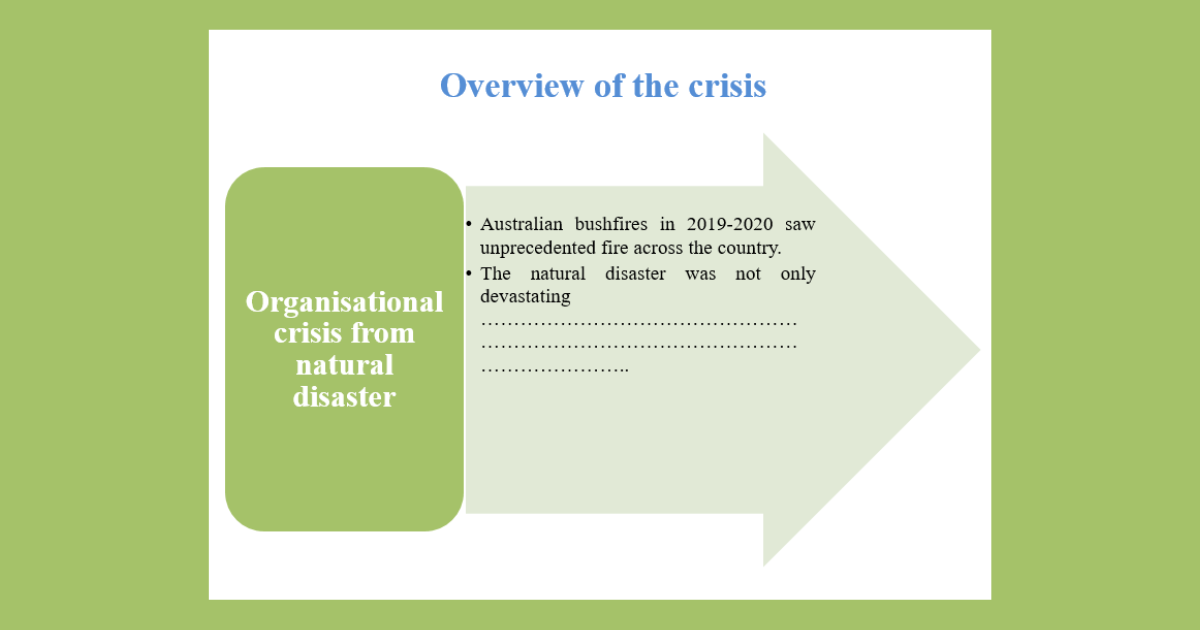
The next section of the question required students to describe the approaches and models used by the company during the crisis. Our experts have curated slides for the approaches and models used by the company in their decision-making processes. The experts have also proposed one model concerning decision-making which the company should have followed.
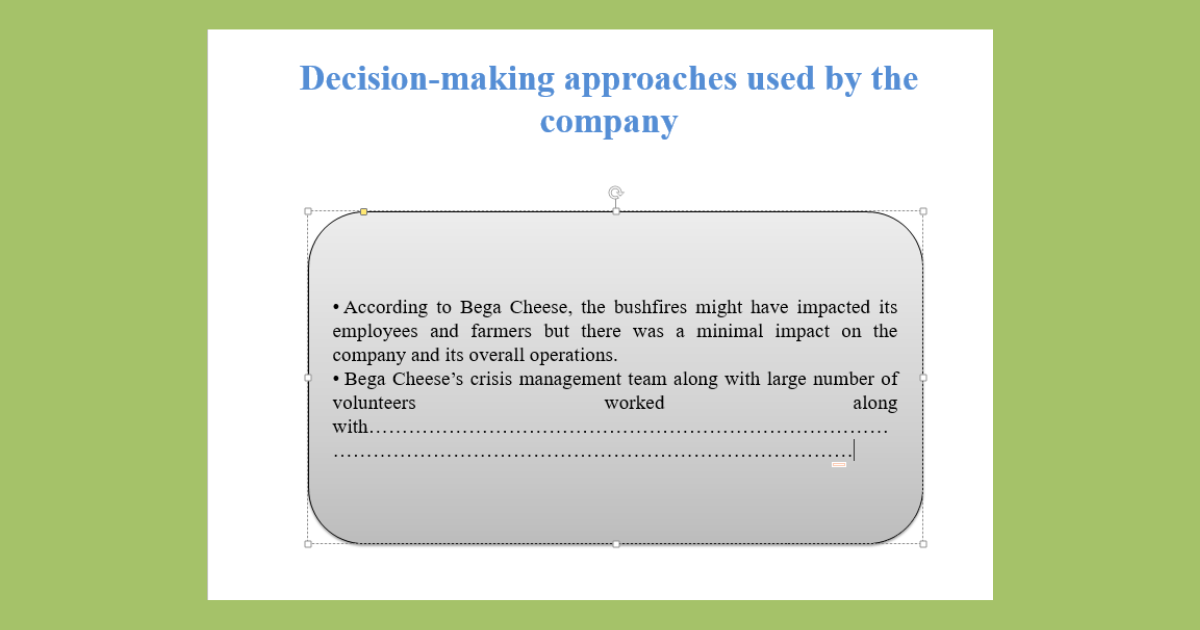
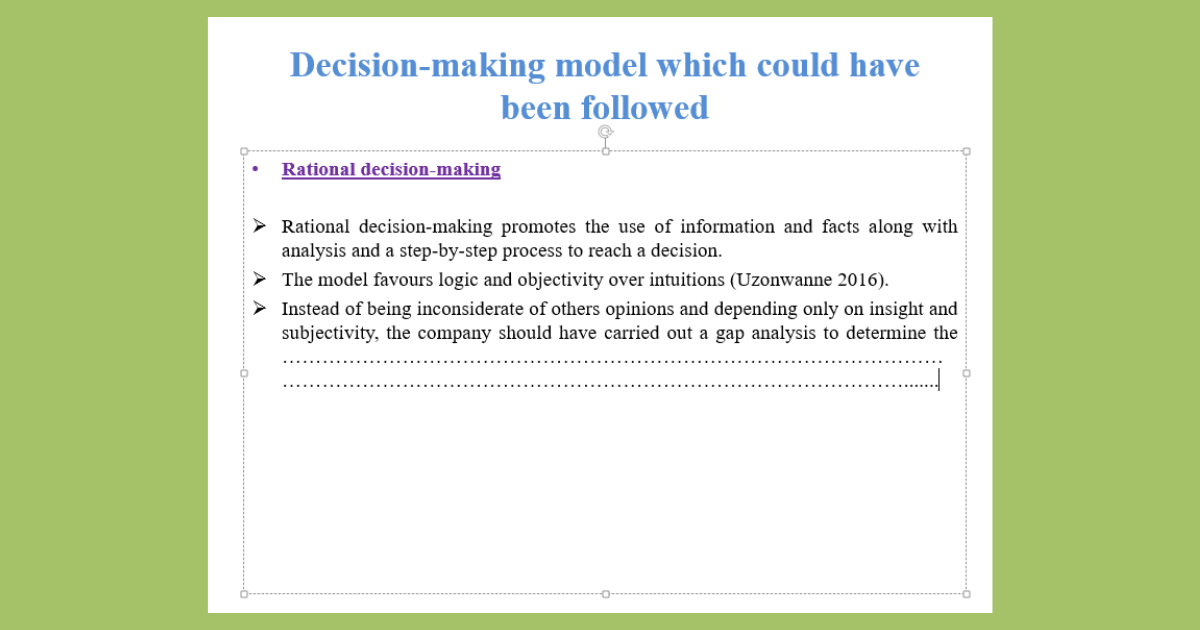
Wish to read the complete content of the above slides regarding the decision-making model and approaches? Please call us at +61 871501720.
Next, the solution requires identification and consequence of two of the biases which might have impacted the decisions which were taken by the organisation. Our experts have identified and assessed the impact of three biases including anchoring bias, stereotyping, and ostrich effect.
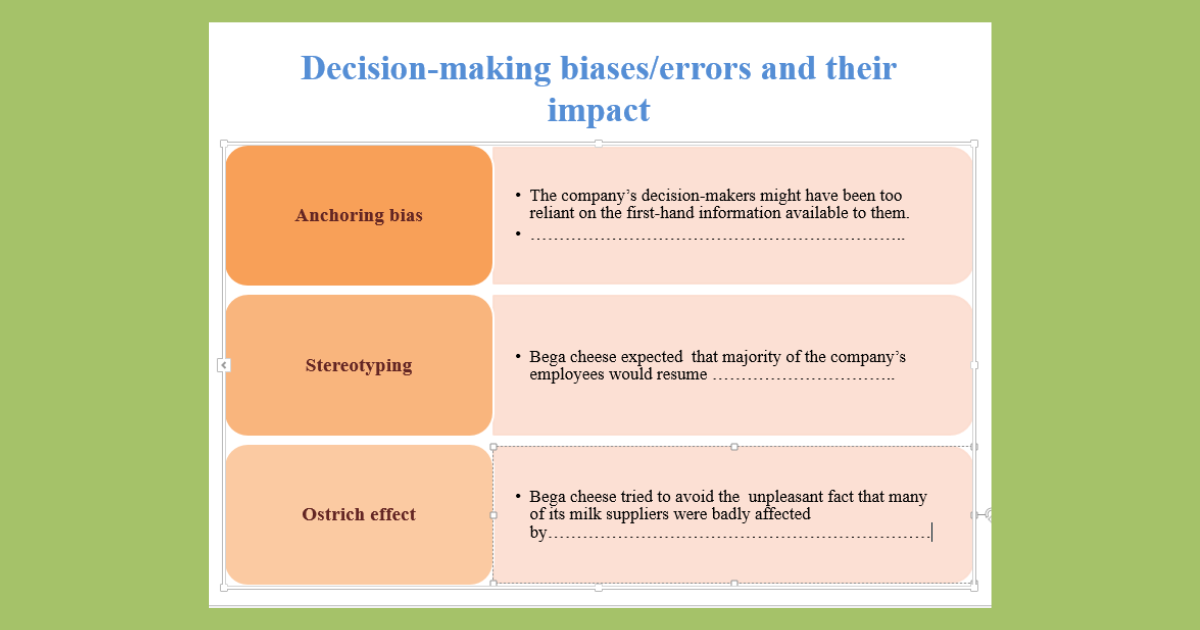
The final part demanded the students to provide some recommendations for the organisation. Through careful review of the decision-making process of the organisation during the crisis, our experts have recommended strategies in order to avoid biases and mistakes during decision-making for future endeavours of the company.
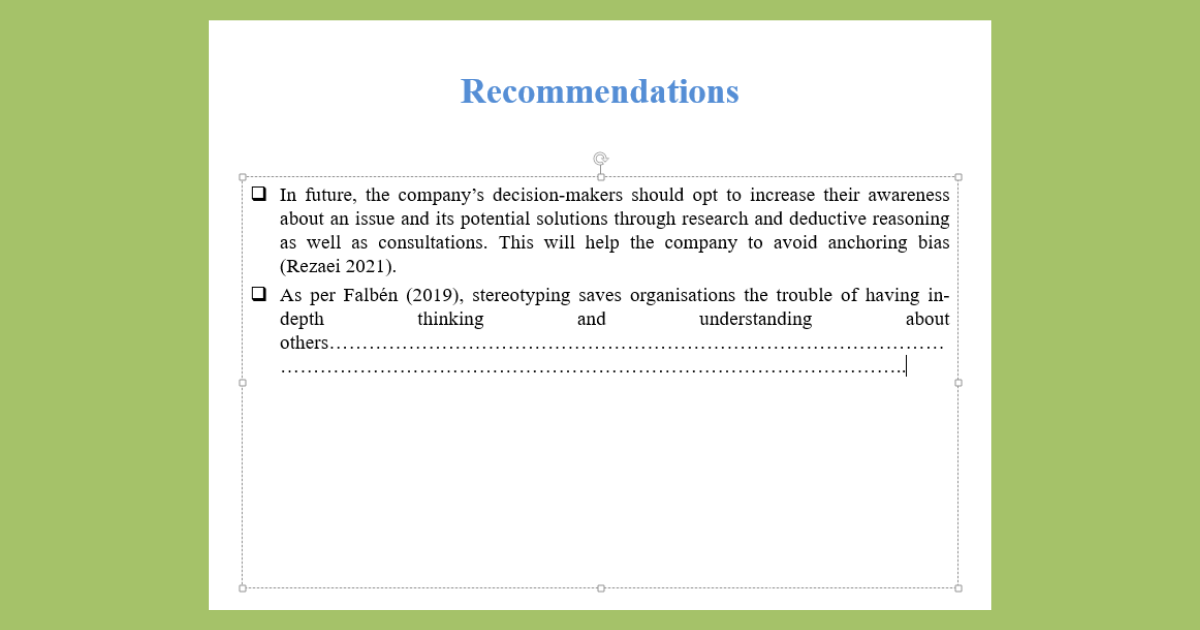
We have presented 50% of the solution for the biases and recommendations proposed by our experts. To read the full solution, please reach out to us at onlineassignmentservices1@gmail.com

Speaker Notes
The students require brief speaker notes for the video report which help them in presenting the webinar. Our experts provide the students with the required assistance to help them deliver the webinar with full confidence. Please read the speaker notes highlighting a summary for the webinar.
Slide 1: Good morning everyone. Today, I am going to present a consultancy webinar in front of you all, for the subject Operations Management and Decision-Making Models. The case study that I picked is regarding the bushfires that happened in Australia and majorly impacted Bega cheese, one of Australia’s dairy companies.
Slide 2: The Australian bushfires which occurred in 2019-2020 were one of the most devastating natural disasters that have occurred in Australia. The forest fires not only burnt around 24.3 million hectares of land but also caused infrastructural damage and loss of lives and livelihood for many.
Slide 3: Company’s decision-makers and the crisis management team might have underestimated the impact that the crisis had on its operations or they might have been a bit too presumptuous in thinking that the bushfires had only a minimal impact on the company overall and a major impact on its farmers and employees.
Slide 4: The alternate decision-making model that the company could have adopted to manage the crisis is the rational decision-making model. The model improves the decisionmaking abilities of a company by depending on reliable facts and information from research and analysing them through a step-by-step process.
Slide 5: There were majorly three types of biases or errors that might have influenced the decisions made by the Bega cheese. One was the anchoring bias which led the company to only focus on first information it received that the company’s operation is minimally affected and not focusing on the other consequential impact of the crisis.
Slide 6: In future, to avoid such biases and errors the company should ensure to have complete awareness of the extent of issue on each of its stakeholders and ensure to have proper reasoning behind every decision made.
We have presented 50% of the solution here for guidance purposes. To read the full solution, please call us at

